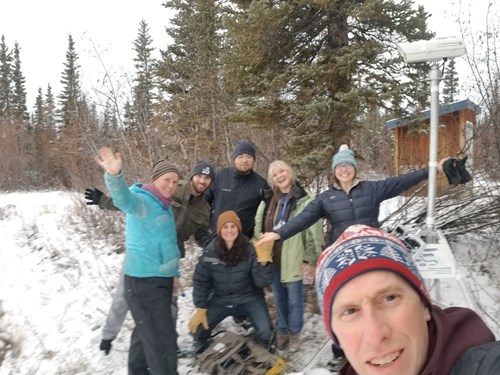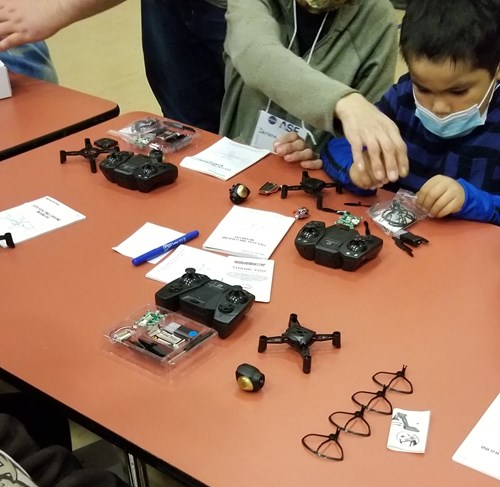5 November 2021

What do you get when you combine flying robots, fresh ice, and a dedicated village teacher and her charming students together with UAF scientists? New capacity to observe lake and river ice to improve community travel safety, understand climate change, and empower STEM learning. John Fredson School in Venetie, AK was the place where these elements combined for three days of fun science education.

A dynamic and complementary team from UAF's Alaska Satellite Facility (Helena Buurman, James Rine, and Kyle Jones...also a CEM M.S. student), IARC (Katie Spellman and Dana Brown), and WERC (Chris Arp) recently journeyed to John Fredson School in Venetie to show K-12 students new ways to observe lake and river ice.

A NASA-funded project DIY Drones partnered with the NSF & NASA project Fresh Eyes on Ice to teach students how to build there own drone, fly it, and then take this expertise out into the field to observe and photograph new and potentially dangerous river and lake ice in NE Alaska.

After learning to build and fly DIY drones, students demonstrated their new skills for parents and other community members during an evening ice story sharing dinner at the school. Students and village elders shared Our Ice Stories and corrected UAF scientists on Gwich'in names for rivers and ice.

In the field, students learned how to make ground observations using NASA's GLOBE Observer system and conduct a series of aerial observations missions on the Chandalar (technically Teedriinjik) River and nearby Big Lake. This site is where school principle Terri Mynat has been taking regular ice thickness and snow depth observations with the Fresh Eyes on Ice project since 2019. After Terri and Chris did an ice safety assessment with guidance from Venetie Elders, they measured an ice thickness of 13 cm...just enough to support foot traffic, but not enough yet for a class of 32 kids with lots of energy.

Fortunately new skills using drones allowed for observing much farther out on the lake. Students now plan to make regular drone surveys of ice conditions on the river in addition to boots on the ice measurements through the winter. These data will go to scientists that use remote sensing to understand climate change and forecast river ice jam flooding, as well engage Venetie childern in STEM education and community safety.
